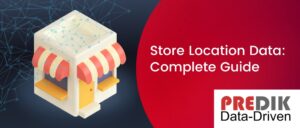Product development isn’t just about having a great idea; it’s about ensuring it resonates with your market. That is why market research has evolved from “nice-to-have” to an “absolute necessity”.
After all, it gives product managers critical insights into customer needs and preferences while helping them understand their competitive landscape.
“Nearly 30,000 new products are introduced each year, and 95% of them fail”
Clayton Christensen, professor at Harvard Business School
In this article we will cover the following topics:
- Understanding product development market research
- Market research for new product development
- ¿Qualitative or quantitative research?
- The importance of data in market research
- The role of alternative data (Non-traditional research methods)
- Big Data and the new way of Conducting a product market research
- Predictive Analytics, the next step to product market analysis
- Some considerations…
Understanding product development market research
Product market research involves systematically gathering, analyzing, and interpreting data about a target market. This includes consumers and competitors to guide decisions throughout the product development process.
This approach aims to reduce uncertainties in the product development process. This includes identifying potential market opportunities and understanding customer needs and preferences. Also, it is the best way to ensure the product aligns with market demands.
In the past, product development was mainly driven by internal business goals and instincts. However, product development has become increasingly customer-centric.
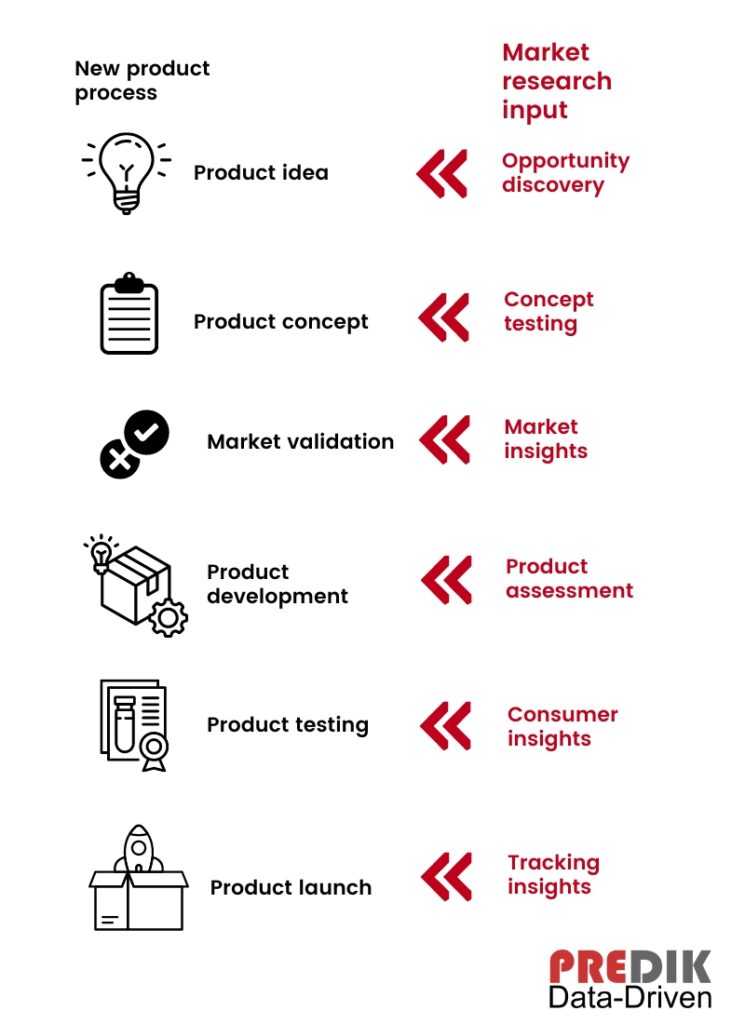
Now, successful product managers and development teams rely heavily on market research data. Why? Data can guide every stage of their product development (From initial product concept to launching it).
Market research for new product development
Market research is important in new product development and concept testing.
Understanding Customer Needs and Preferences: Market research provides vital insights into customers’ needs, wants, and values. It reveals trends in customer behavior and preferences, enabling businesses to develop test products that meet current market demands and anticipate future ones.
Identifying Market Opportunities: Through market research, businesses can identify market gaps, emerging trends, or underserved customer segments. These insights can inspire innovative product ideas and help position the new product for success.
Mitigating Risks: Developing a new product involves significant investment and inherent risk. Market research helps to reduce these risks by providing data-driven insights into the viability of a product concept, potential challenges, and the competitive landscape.
Informing Product Design: Market research can inform every aspect of product design, from functionality and aesthetics to usability and sustainability.
Evaluating Success: After product launch, product testing market research can help assess the product’s success and identify areas for improvement. Customer feedbacks allow for continuous improvement and evolution in response to market feedback and changes.
Remembering the case of Windows Vista
Microsoft’s launch of Windows Vista in 2007 was received with general dissatisfaction due to numerous compatibility and performance issues.
Despite a large marketing budget and high expectations, even loyal Microsoft customers voiced criticism. Apple’s “I’m a Mac” ad campaign amplified this negative feedback.
If such a scenario were to occur today, with the reach of social media and user-generated reviews, the backlash might be even more severe. This is an example of the importance of ensuring a product is ready to meet user expectations before it hits the market.
¿Qualitative or quantitative research?
Quantitative and qualitative market research are two fundamental data collection approaches. Each one provides different insights, contributing to a comprehensive understanding of the market and your target audience.
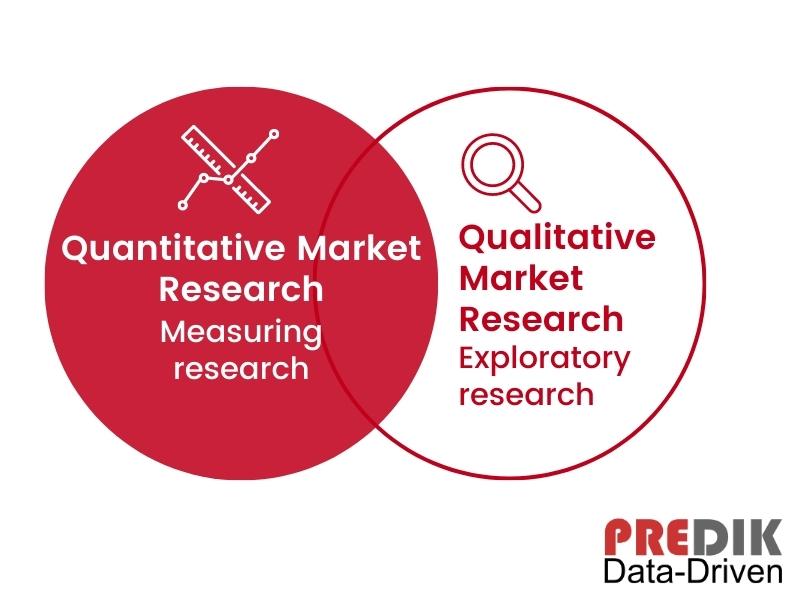
Quantitative Market Research
Quantitative conduct research focuses on collecting and analyzing numerical data. It seeks to quantify the problem by generating numerical data that later be used as usable statistics. This approach works to measure the market’s size, identify trends, understand consumer behaviors, and measure the effectiveness of marketing strategies.
This data is represented visually in graphs, pie charts, histograms, and frequency distributions. Some common quantitative research uses in product development include pricing research, market segmentation, and concept testing.
Qualitative Market Research
In contrast, qualitative research deals with non-numerical data. As a exploratory research, it aims to gather an in-depth understanding of human behavior and attitudes. It’s typically more subjective.
A qualitative approach helps gain insights into customer needs, motivations, perceptions, and preferences.
In product development, qualitative research is essential for:
- Product idea generation.
- Understanding customer pain points.
- Gaining deeper insights into customer feedback.
To fully understand your market, it’s essential to use a mix of both quantitative and qualitative research. While quantitative data provides the hard numbers and trends, qualitative data helps add context and a more profound understanding.
The importance of data in market research
Data is the backbone of any product market research and the key to informed decision-making in product development. Collecting and analyzing quality data leads to valuable insights that can prevent your team from making the wrong decision and wasting a useful budget.
One of the critical considerations is the choice between primary and secondary research methods. Both offer unique advantages and can often complement each other when utilized strategically.
“75% of consumer packaged goods and retail products fail to earn even $7.5 million during their first year.”
Harvard Business Review
Primary Market Research
Primary research involves directly collecting data from sources explicitly conducted for the purpose. It provides first-hand, up-to-date insights highly relevant to your product, making it particularly valuable for strategic decisions.
Traditional primary research methods include:
- Surveys
- Interviews
- Focus Groups
- Observations
- Product Testing Market Research
Secondary Market Research
Secondary research, on the other hand, involves using already available data. This can be internal data within your organization (Like existing products data) or external information published by other organizations.
“On average, American families buy the same 150 items, which constitute as much as 85% of their household needs.”
Trout and Partners
Although it might not be as tailored to your needs as primary data, secondary research can still provide valuable insights, often at a lower cost and time investment.
Secondary research methods include:
- Industry Reports: These reports, typically prepared by research firms or trade organizations, provide insights into industry trends, market size, and competitive landscape.
- Academic Studies: Universities and research institutions often publish studies that can provide insights into consumer behavior and market trends.
- Government Statistics: Government agencies often publish a wealth of data on economic indicators, demographic data, and industry trends.
- Competitive Analysis Data: Publicly available information about competitors, such as their annual reports, press releases, and marketing material, can provide valuable insights.
The role of alternative data (Non-traditional research methods)
Primary research methods can sometimes be limited, while secondary research methods may not reflect recent market changes. This is where alternative data comes to play when conducting market research product testing.
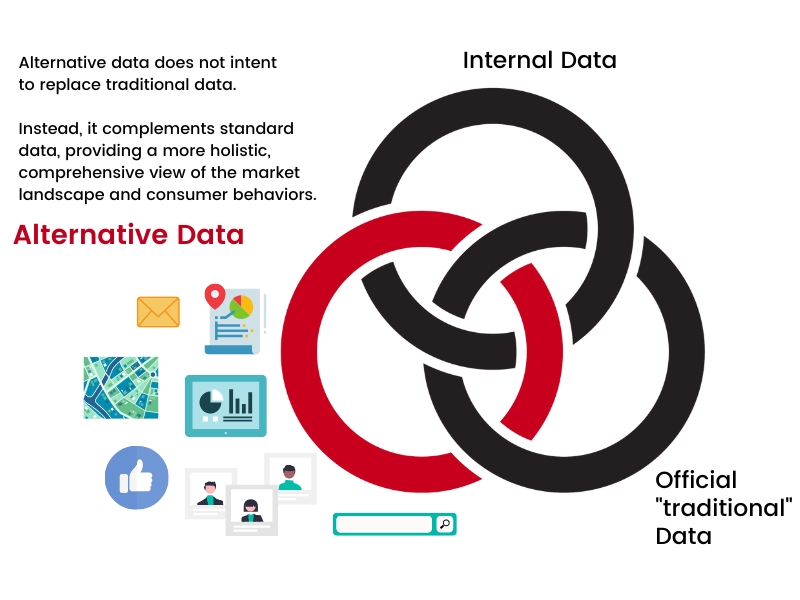
Alternative data refers to information gathered from non-traditional sources besides mainstream financial reports or traditional datasets. This data can include sources such as social media posts, web traffic, satellite images, and even product reviews.
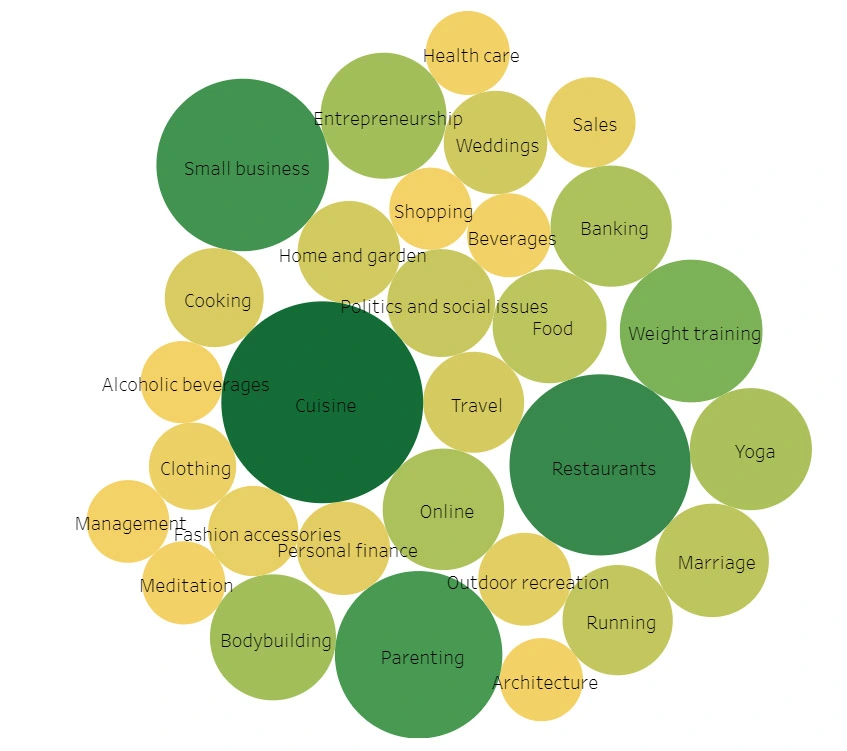
We recommend you reading: Alternative Data: What Is It? How To Get It? What Are Its Benefits?
Here’s why alternative data is gaining traction in the domain of market research for product development:
Diversity of sources: Unlike traditional secondary data sources that contemplate one or a few sources at a time, alternative data provides insights from several ones. This enables product managers to get a more comprehensive and strategic market vision.
Uncover Hidden Patterns: By leveraging large-scale alternative datasets, product managers can use advanced data analytics and artificial intelligence technologies. This can help uncover hidden patterns and trends that aren’t apparent in traditional datasets.
Customer Behavior: Foot traffic data, for instance, can give businesses a direct look into the likes, dislikes, and preferences of their customers in physical stores.
Competitive Analysis: Alternative data can provide a competitive edge. Giving insight into competitor activities, customer sentiment about their products, and emerging market trends.
We recommend you reading: How to use Big Data for competitive Intelligence?
Innovation: As alternative data often comes from newer sources, it can provide insights that encourage innovation.
Using primary, secondary, and alternative research in conjunction can help companies understand their market. This is crucial when informing every stage of the product development process.
Big Data and the new way of Conducting a product market research
The introduction of Big Data has dramatically transformed how businesses conduct product manager market research. It has provided new avenues for insight and enabled previously unattainable precision.
| Factors | Traditional Product Market Research | Big Data Product Market Research |
|---|---|---|
| Scope of Data | Limited to selected data sources and sample sizes. | Integrates vast volumes of diverse data from various sources. |
| Speed of Insights | Typically slower, as data collection and analysis often take time. | Delivers near real-time insights due to advanced analytics. |
| Accuracy | Accuracy depends on sample size and sampling technique. | Enhanced accuracy due to larger data sets and predictive analytics. |
| Predictive Capability | Limited predictive capabilities, primarily based on historical data. | Strong predictive capabilities, anticipating future trends and customer behaviors. |
| Data Types | Primarily structured data (e.g., survey responses, interviews). | Includes both structured and unstructured data (e.g., social media posts, online reviews). |
| Analysis | Primarily manual or semi-automated analysis. | Advanced automated analysis with Machine Learning and AI. |
Important: While both approaches merit, the best research strategy often combines traditional and Big Data market research. This synergy allows businesses to leverage the strengths of each approach, providing comprehensive insights for effective product development.
Predictive Analytics, the next step to product market analysis
Predictive analytics has become a game-changer in market analysis. It uses the power of Machine Learning, Artificial Intelligence (AI), and statistical modeling to analyze current and historical data to forecast probable results.
We recommend you reading: What is Predictive Analytics? Understanding the Basics and Beyond (With Examples)
As the name implies, its primary purpose is to estimate the outcome of future events. This makes it a potent tool for market analysis.
As companies move into an increasingly data-driven world, predictive analytics will continue playing a pivotal role in driving business success.
Some considerations…
While Big Data has transformed market research, businesses must invest in the necessary data management and analytics capabilities to fully leverage its potential.
Ethical considerations regarding data privacy and security should also be central to a company’s Big Data strategy.
At PREDIK Data Driven, we are experts in developing Big Data market research solutions for B2B and B2C companies. Our methodology adapts to your unique requirements and needs.



